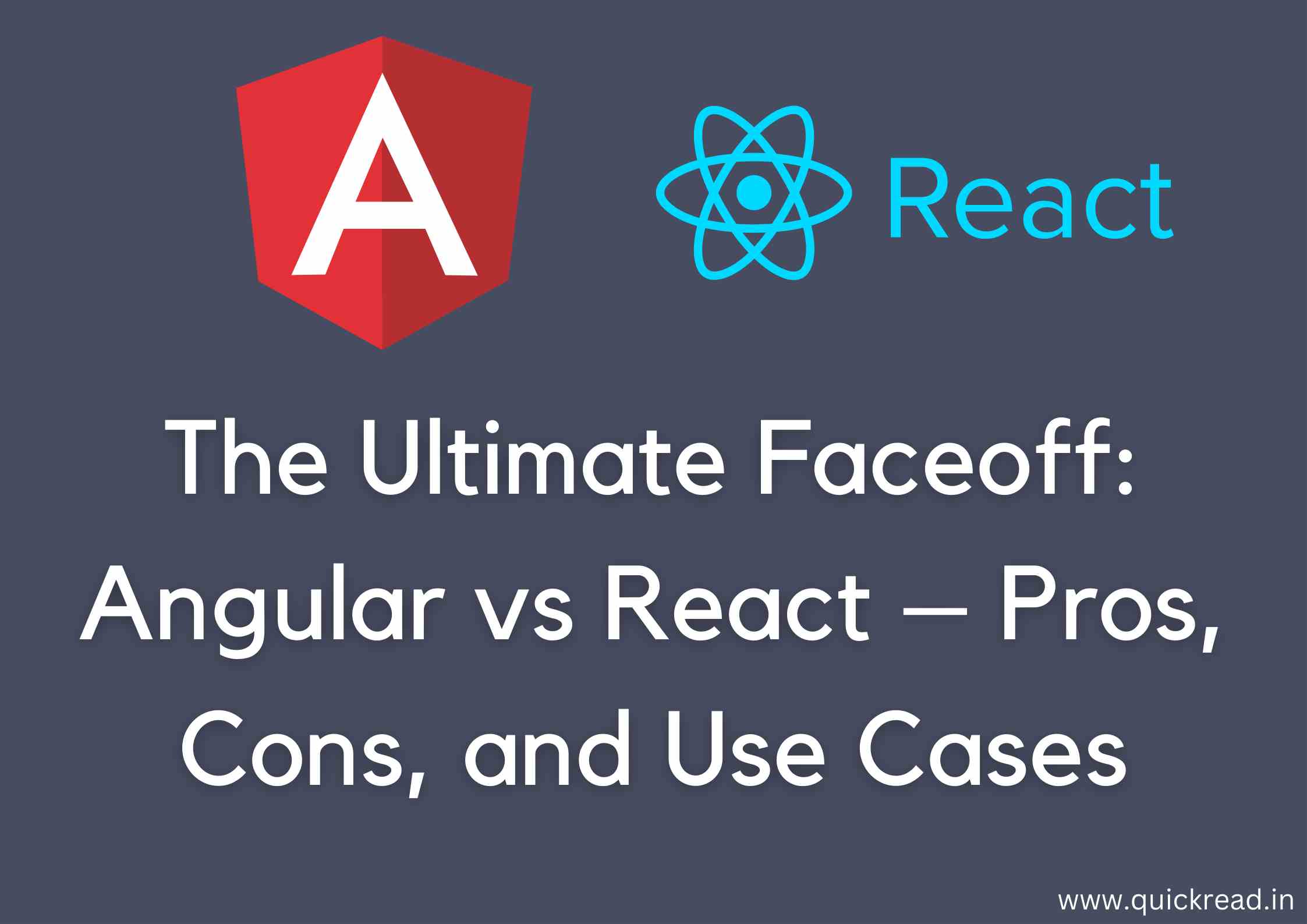Introduction
Angular vs React: Angular and React are two of the most popular JavaScript frameworks used for building modern, interactive web applications. Both frameworks have their own strengths and weaknesses. This article will provide a high-level conceptual comparison between Angular and React.
Overview
Angular is a TypeScript based framework built and maintained by Google. It follows a component based architecture and provides many out-of-the-box features like routing, state management, form handling etc.
React is a JavaScript library for building user interfaces maintained by Facebook. It focuses only on the view layer. Additional libraries are used for state management, routing etc.
Both Angular and React leverage a component based architecture, but Angular provides a full-fledged framework while React offers a lightweight library.
Architecture
Angular has a fixed architectural pattern organized around Modules, Components and Services. Modules group related functionality, Components define UI elements and Services provide shared business logic.
The architectural pieces fit together in a prescribed way. Angular takes care of routing, dependency injection, change detection etc automatically. This helps quick bootstrapping but enforces some constraints.
React follows a more flexible architecture with standalone reusable components at its core. There is no formal concept of modules or services. State management and routing are handled by separate libraries.
Developers have to wire the pieces together, but this provides more control over the final architecture. The same React component model can be used on web, mobile and even VR platforms.
TypeScript Support
Angular is built with TypeScript which provides type safety and other benefits like autocompletion. TypeScript helps identify bugs early and improve overall code quality.
React can be used with plain JavaScript but also integrates well with TypeScript. Many React codebases leverage TypeScript for its advantages by defining component interfaces etc.
TypeScript usage is optional in React, while Angular is designed primarily with TypeScript in mind for defining components, services, APIs etc.
Data Binding
Angular uses two-way data binding between components and DOM elements. Changes are automatically reflected between them. This helps accelerate development.
React uses one-way data binding from parent to child components. State is passed down explicitly via properties rather than bound. This makes the flow more predictable during debugging.
Two-way binding leads to quicker prototyping, while one-way binding reduces hidden dependency issues.
Change Detection
Angular uses zone.js for change detection. Whenever component data changes, the zone detects it and triggers rerendering subscribing views automatically.
React does not have an integrated change detection system. It relies on state changes to trigger focused rerendering of affected components only.
Angular’s change detection is broader while React’s is more focused on state changes. Angular can detect external data changes while React needs forceUpdate.
Styling
Angular uses normal CSS and SCSS for component styling. CSS bindings help isolate component styles. Special selectors target component sub-elements.
React abstracts CSS into the JS layer via JSX. Styles are defined using JavaScript objects instead of CSS/SCSS. Solutions like Styled Components take this further.
Angular component styling is more traditional while React’s is fully component scoped but JS based. React also allows CSS-in-JS libraries.
Testing
Angular provides an integrated framework for testing components and services using Jasmine, Protractor etc. Unit and end-to-end testing capabilities are inbuilt.
React has react-testing-library for unit testing components in isolation. For end-to-end testing, external libraries like Cypress are recommended.
Angular makes testing a first class citizen while React testing requires glueing together various libraries. React’s isolated component testing is easier to reason about.
Angular vs React Summary
| Factor | Angular | React |
|---|---|---|
| Created by | ||
| Type | Framework | Library |
| Architecture | Fixed MVC pattern | Flexible composable |
| Languages | TypeScript | JavaScript (JSX) |
| Data binding | Two-way binding | One-way binding |
| Change detection | Zone.js integrated | State based re-rendering |
| Styling | CSS/SCSS | CSS-in-JS |
| Testing | Integrated framework | External libraries |
When to Use
Some guidelines on when to prefer Angular or React:
- Prefer Angular if you need a batteries included, kitchen sink framework with integrated routing, state management etc.
- Prefer React if you want flexibility to choose complementary libraries like Redux, React Router etc.
- Use Angular if your app needs advanced change detection capabilities out of the box.
- Use React if you need greater control over render performance and change tracking.
- Choose Angular if your team prefers strong typing discipline with TypeScript.
- Choose React if you want lighter binding between components, CSS-in-JS capabilities etc.
Frequently Asked Questions
- Can Angular and React be used together?
Yes, it is possible to use React components within an Angular app using wrappers. Similarly, Angular components can be used in React apps.
- Which is better for large enterprise projects – Angular or React?
Angular provides more structure out-of-the-box making it potentially better suited for large enterprise teams. React offers more flexibility but requires defining architecture.
- Is Angular or React better for mobile app development?
React Native makes it easy to use React for mobile apps. Angular has frameworks like Ionic and NativeScript for mobile development but React Native is more mature.
- Is Angular faster than React or viceversa?
Both are very fast modern frameworks. Performance depends on app architecture and use of best practices rather than any inherent speed difference.
- Which framework has better community support?
Both Angular and React have very large active developer communities. React likely has even more third-party libraries and components available.
Conclusion
Angular and React both enable building modern web UIs. Angular provides an all-in-one framework while React offers a modular library approach. Factor in your app needs, team skills and architectural preferences when choosing between them. Both have strong corporate backing and large developer communities making them safe long-term options for web development.


